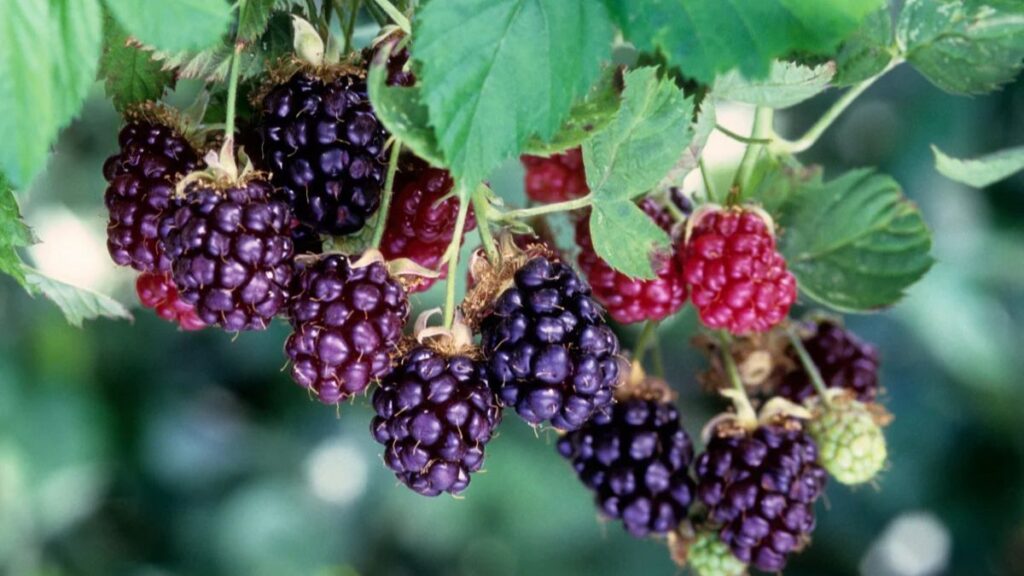Introduction
The boysenberry is a fascinating and flavorful hybrid berry that has captured the attention of fruit enthusiasts, chefs, and gardeners alike. With its deep purple hue, sweet-tart flavor, and rich history, the boysenberry stands out among other berries. This article explores the origins, cultivation, nutritional benefits, culinary uses, and commercial significance of this unique fruit.
Origins and History of the Boysenberry
The boysenberry is a cross between several berry species, including the European raspberry (Rubus idaeus), common blackberry (Rubus fruticosus**, American dewberry (Rubus aboriginum), and loganberry (Rubus × loganobaccus). Its creation is credited to Rudolph Boysen, a horticulturist from California, who experimented with berry hybrids in the 1920s.
Boysen’s initial attempts to cultivate the berry were unsuccessful, and the plants were abandoned. However, in the 1930s, a farmer named Walter Knott (of Knott’s Berry Farm fame) rediscovered the struggling plants, nurtured them, and successfully brought the boysenberry to commercial prominence. Knott’s Berry Farm became famous for its boysenberry preserves, pies, and other berry-based products, helping to popularize the fruit across the United States.
Characteristics of the Boysenberry
The boysenberry is known for its distinct characteristics:
- Appearance: Large, deep maroon to almost black in color, with a soft texture.
- Flavor: A perfect balance of sweetness and tartness, more complex than blackberries or raspberries.
- Growth Habit: A trailing vine that requires trellising, similar to blackberries.
- Harvest Season: Typically ripens in late spring to early summer, depending on the climate.
Unlike some other berries, boysenberries are highly perishable and are often processed into jams, syrups, and frozen products rather than sold fresh in supermarkets.
Cultivation and Growing Conditions
Growing boysenberries requires specific conditions to ensure a healthy and productive crop.
Climate and Soil Requirements
- Climate: Boysenberries thrive in temperate climates with mild winters and warm summers. They are commonly grown in California, Oregon, and New Zealand.
- Soil: Well-drained, loamy soil with a pH between 6.0 and 7.0 is ideal.
- Sunlight: Full sun (at least 6-8 hours daily) is necessary for optimal growth.
Planting and Maintenance
- Planting: Boysenberries are usually propagated through cuttings or root divisions. They should be planted in early spring.
- Trellising: Due to their trailing nature, they require sturdy trellises or support systems to keep the canes off the ground.
- Watering: Consistent moisture is crucial, especially during fruit development, but overwatering should be avoided to prevent root rot.
- Pruning: Regular pruning helps maintain plant health and encourages better fruit production. Old canes should be removed after fruiting to make way for new growth.
Pests and Diseases
Boysenberries are susceptible to common berry pests and diseases, including:
- Aphids, spider mites, and cane borers (controlled with organic pesticides or beneficial insects).
- Fungal infections like powdery mildew and botrytis (prevented by proper spacing and airflow).
Nutritional Benefits of Boysenberries
Boysenberries are not only delicious but also packed with essential nutrients. They offer several health benefits:
Rich in Antioxidants
Boysenberries contain high levels of anthocyanins, which give them their deep color and provide powerful antioxidant properties. These compounds help combat oxidative stress and reduce inflammation.
High in Fiber
A single cup of boysenberries provides a significant amount of dietary fiber, aiding digestion and promoting gut health.
Vitamins and Minerals
- Vitamin C: Supports immune function and skin health.
- Vitamin K: Important for blood clotting and bone health.
- Manganese: Plays a role in metabolism and antioxidant defense.
- Folate: Essential for cell growth and DNA synthesis.
Low in Calories
With only about 60-70 calories per cup, boysenberries are a great addition to a healthy diet.
Culinary Uses of Boysenberries
Due to their rich flavor, boysenberries are used in a variety of culinary applications.
Fresh Consumption
While fresh boysenberries are delicate and not always easy to find, they can be enjoyed:
- On their own as a snack
- Mixed into yogurt or cereal
- As a topping for desserts like ice cream and cheesecake
Jams, Jellies, and Preserves
Their high pectin content makes boysenberries ideal for homemade jams and jellies. Knott’s Berry Farm famously popularized boysenberry preserves.
Baked Goods
- Pies and Cobblers: Boysenberry pie is a classic dessert.
- Muffins and Tarts: Adds a sweet-tart flavor to pastries.
Beverages
- Smoothies: Blended with other fruits for a nutritious drink.
- Syrups and Sauces: Used in cocktails, pancakes, and desserts.
Commercial Products
Beyond fresh and homemade uses, boysenberries are found in:
- Frozen berry mixes
- Juices and fruit blends
- Flavored yogurts and sorbets
Boysenberries in Popular Culture
Thanks to Knott’s Berry Farm, the boysenberry has become a cultural icon in California. The farm hosts an annual “Boysenberry Festival”, featuring boysenberry-themed foods, drinks, and entertainment. The berry’s unique history and flavor have made it a beloved fruit in American agriculture.
Conclusion
The boysenberry is a remarkable hybrid berry with a rich history, delightful taste, and numerous health benefits. Though not as widely available as strawberries or blueberries, its unique flavor profile makes it a favorite among berry lovers. Whether enjoyed fresh, in jams, or as part of desserts, the boysenberry continues to be a cherished fruit with a legacy that spans nearly a century.
For gardeners willing to put in the effort, growing boysenberries can be a rewarding experience. And for food enthusiasts, exploring boysenberry-based recipes offers a delicious way to enjoy this exceptional berry.
So next time you come across boysenberry jam or a boysenberry dessert, take a moment to appreciate the fascinating story and wonderful taste of this extraordinary fruit!






